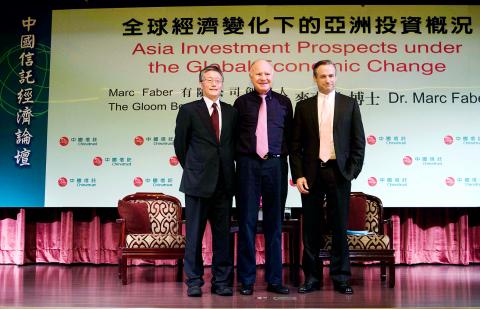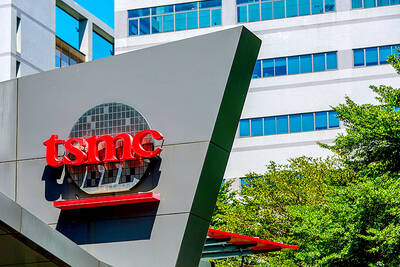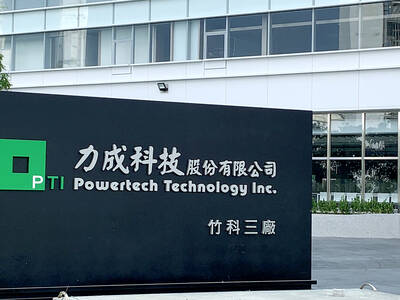Marc Faber, publisher of the Gloom, Boom and Doom report, yesterday reiterated his criticism of money printing practices, which he believes will continue in the US, Europe and elsewhere, causing bubbles such as those seen in the Chinese real-estate market.
“A third wave of quantitative easing by the US Federal Reserve is just a matter of time,” said Faber, a contrarian investor who has been referred to as “Doctor Doom” for a number of years.
Printing money is the way global governments will evade debt crises, such as the one that is gripping Europe, Faber said in Taipei.

Photo: CNA
That would forestall the crisis rather than solve it, keeping prices elevated for assets like stocks, real estate in some areas and precious metal, he said.
Loose monetary policies, including low interest rates, intended as a short-term fix, can have unintended consequences later, Faber said.
While central banks can inject fresh funds into the markets, they cannot control where the funds flow, he said, adding that money printing has encouraged speculation on commodities whose prices have gone up faster than real demand in recent years.
“Some people will benefit from money printing that deflates the purchasing power of currency ... but the middle and lower--income classes are being hurt,” said Faber, an investment adviser focused on value investments, who owns Marc Faber Ltd.
Countries with resources are basking in the trend in light of their sharp increases in international reserves, which Faber said was symptomatic of monetary inflation and a shift in wealth.
The fast-growing economy of China has pushed up its inflationary pressures, with the bubble in the real-estate sector on the brink of bursting, Faber said.
“Don’t believe China’s consumer price index stands only at 5 percent,” he said. “The truth is somewhere between 12 percent and 15 percent ... The real-estate bubble is so evident that Chinese property shares are very weak as the volume of real-estate transactions goes down and prices fall.”
Faber said China would follow the practice of quantitative easing if it has to choose between printing money and a concrete recession.
The Chinese bubble will burst eventually, in three months or in three years; when it happens, it will have devastating consequences for the global economy, he said.
“Chinese invented paper. They know how to print money,” Faber said.
Still, the ongoing shifting balance of economic power from industrialized countries to emerging economies is building up geopolitical tensions, especially in the Middle East and Central Asia, he said.
All the West needs to do to contain China is seize control of oil supplies, but China and the countries dependent on oil imports would not allow that for the sake of self-preservation, Faber said.
He recommended risk diversification against the current backdrop, but took a dim view of government bond purchases as they would mean trust in the easy monetary policy.
Rather, he suggests owning physical gold, equities and Asian real estate that will prove a better defense against inflation.
Greece, Faber said, is bankrupt whether Europe likes to admit it or not, and the European Central Bank will print money to postpone a systematic failure.

RUN IT BACK: A succesful first project working with hyperscalers to design chips encouraged MediaTek to start a second project, aiming to hit stride in 2028 MediaTek Inc (聯發科), the world’s biggest smartphone chip supplier, yesterday said it is engaging a second hyperscaler to help design artificial intelligence (AI) accelerators used in data centers following a similar project expected to generate revenue streams soon. The first AI accelerator project is to bring in US$1 billion revenue next year and several billion US dollars more in 2027, MediaTek chief executive officer Rick Tsai (蔡力行) told a virtual investor conference yesterday. The second AI accelerator project is expected to contribute to revenue beginning in 2028, Tsai said. MediaTek yesterday raised its revenue forecast for the global AI accelerator used

Taiwan Semiconductor Manufacturing Co (TSMC, 台積電) has secured three construction permits for its plan to build a state-of-the-art A14 wafer fab in Taichung, and is likely to start construction soon, the Central Taiwan Science Park Bureau said yesterday. Speaking with CNA, Wang Chun-chieh (王俊傑), deputy director general of the science park bureau, said the world’s largest contract chipmaker has received three construction permits — one to build a fab to roll out sophisticated chips, another to build a central utility plant to provide water and electricity for the facility and the other to build three office buildings. With the three permits, TSMC

The DBS Foundation yesterday announced the launch of two flagship programs, “Silver Motion” and “Happier Caregiver, Healthier Seniors,” in partnership with CCILU Ltd, Hondao Senior Citizens’ Welfare Foundation and the Garden of Hope Foundation to help Taiwan face the challenges of a rapidly aging population. The foundation said it would invest S$4.91 million (US$3.8 million) over three years to foster inclusion and resilience in an aging society. “Aging may bring challenges, but it also brings opportunities. With many Asian markets rapidly becoming super-aged, the DBS Foundation is working with a regional ecosystem of like-minded partners across the private, public and people sectors

BREAKTHROUGH TECH: Powertech expects its fan-out PLP system to become mainstream, saying it can offer three-times greater production throughput Chip packaging service provider Powertech Technology Inc (力成科技) plans to more than double its capital expenditures next year to more than NT$40 billion (US$1.31 billion) as demand for its new panel-level packaging (PLP) technology, primarily used in chips for artificial intelligence (AI) applications, has greatly exceeded what it can supply. A significant portion of the budget, about US$1 billion, would be earmarked for fan-out PLP technology, Powertech told investors yesterday. Its heavy investment in fan-out PLP technology over the past 10 years is expected to bear fruit in 2027 after the technology enters volume production, it said, adding that the tech would